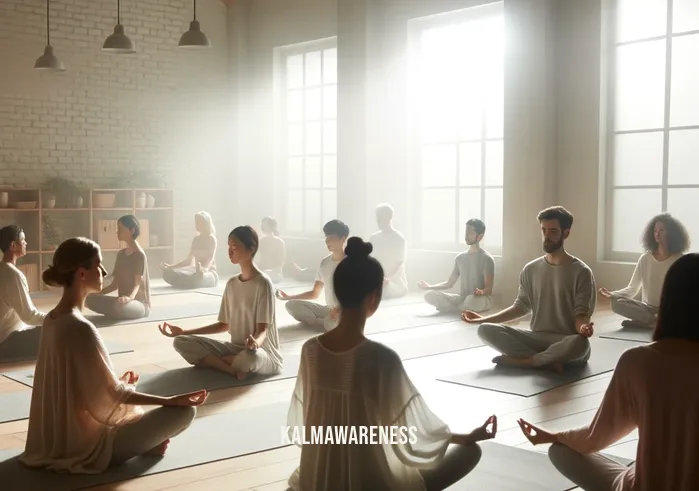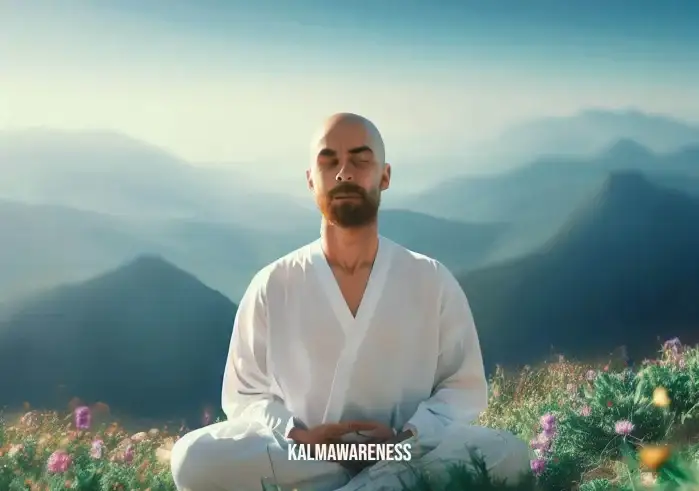The Transformative Power of Addiction Meditation: An Introduction to Recovery and Inner Peace
In the modern world, where stress and external pressures are a daily reality, finding solace and inner peace becomes not just desirable, but essential. One such avenue that has been gaining immense popularity is addiction meditation. This practice, rooted in mindfulness and reflection, offers an opportunity to individuals to rediscover their center, heal, and chart a course towards sustained well-being.
Understanding Addiction Meditation
Meditation, at its core, is a technique that involves attaining a peaceful state of mind in which thoughts are not occupied by worry. However, when we specifically address the context of addiction, meditation transforms into a robust tool for recovery. It anchors the mind, allowing individuals to confront, understand, and ultimately, overcome their addictive behaviors.
The principle behind addiction meditation is twofold. First, it aids in the cultivation of mindfulness. This state of heightened awareness allows individuals to recognize triggers, emotions, and habitual patterns that might lead to relapse. In this article on mindfulness, a deeper exploration of its importance and application is presented.
Secondly, meditation provides a safe space for reflection. It’s a sanctuary where individuals can confront their past, reconcile with it, and move forward. As the saying goes, “To heal, we must first reflect on things in the past and understand their impact on our present.”
The Role of Meditation in Recovery Tools
While there are several recovery tools available, meditation holds a unique position. It’s not just about physical well-being, but it delves deep into the psyche, offering sustainable self-care. This holistic approach ensures that individuals are equipped not just to overcome addiction but to thrive in their post-recovery lives.
One of the emerging trends is the use of EMDR meditation. EMDR, or Eye Movement Desensitization and Reprocessing, when integrated with meditation, can be particularly effective in addressing trauma, a frequent precursor or companion to addiction.
How Meditation Promotes Healing and Inner Peace
The journey from addiction to recovery is not linear. It’s riddled with challenges, setbacks, and moments of doubt. However, meditation offers a beacon of hope. It’s a constant that individuals can return to, finding solace and strength. The process of clearing energy meditation serves as an example. By purging negative energy and thoughts, individuals can rejuvenate their spirit and remain centered in their recovery journey.
Meditation also promotes inner peace by enabling individuals to be peaceful with their past decisions. It teaches acceptance and self-forgiveness, essential ingredients for sustained recovery.
Making Meditation Accessible
The beauty of meditation is its adaptability. Whether you’re exploring the benefits of mindful hypnobirthing or trying to understand if one can meditate lying down, there’s a form of meditation suited for every individual.
Furthermore, integrating practices like mindful movement sleep or engaging in specialized yoga forms like rouse yoga can complement traditional meditation techniques, making the journey to recovery holistic and multifaceted.
Conclusion and a Glimpse into the Next Chapters
Addiction meditation is more than just a technique—it’s a transformative journey. It bridges the chasm between addiction and recovery, offering hope, healing, and a promise of a better tomorrow.
In the subsequent segments, we will delve deeper into the nuanced aspects of meditation, exploring its different forms, its profound impact, and how individuals across various life stages, from teenagers walking the path of self-discovery to adults grappling with life’s challenges, can benefit from it.
Intrigued? Eager to discover more about how meditation can be your guiding light? Continue reading and embark on this enlightening journey with us.

The Varieties and Nuances of Addiction Meditation
As we delve deeper into the realm of addiction meditation, it’s essential to understand its multifaceted nature. This ancient practice, adapted to address modern challenges, offers a rich tapestry of techniques and benefits. From incorporating body movements to focusing on specific energy centers, addiction meditation provides a comprehensive approach to healing.
Techniques Tailored for Recovery
Every individual’s journey through addiction is unique, which means the path to recovery also needs to be customized. Several meditation practices have been fine-tuned to address different aspects of addiction.
Mindful Movement: This method, drawing inspiration from practices like Rouse Yoga, focuses on integrating body movements with meditative awareness. Such practices are excellent for those who find stillness challenging.
Guided Visualizations: Leveraging the power of imagination, this technique involves following a narrative, often focusing on positive outcomes and personal growth. Short quotes about personal growth can often serve as focal points or mantras during these sessions.
Chakra-Based Meditation: By focusing on different energy centers, individuals can target specific emotional or physical blocks. The galactic chakra, for example, connects one to universal energies and insights.
Reflective Meditation: A practice where individuals keep in mind their past actions, decisions, and patterns, using them as a platform for growth and understanding.
Elemental Meditation: This practice involves focusing on elements like water, fire, and air. The element of some meditation exercises can be incredibly grounding, especially for those feeling disconnected.
The Benefits: Beyond Just Recovery
While the primary goal of addiction meditation is to assist in overcoming addictive behaviors, the benefits extend far beyond.
Emotional Stability: Meditation equips individuals with the tools to spell stabilize their emotions, helping them respond rather than react.
Enhanced Self-awareness: By turning the gaze inward, individuals develop a deeper understanding of themselves, which can be a cornerstone for genuine transformation.
Improved Physical Health: As stress reduces and mental clarity enhances, there’s a positive ripple effect on physical health as well.
Deepened Connection: Through practices like the one focusing on the frequency for throat chakra, individuals can improve their communication and relationships.
Personal Growth: Meditation offers insights, both profound and subtle, facilitating a journey of continuous self-improvement.
A Snapshot of Addiction Meditation Techniques
| Technique | Primary Focus | Key Benefit |
|---|---|---|
| Mindful Movement | Body Awareness | Enhances physical-mental synchronization |
| Guided Visualizations | Imagination & Positivity | Boosts optimism and future vision |
| Chakra-Based Meditation | Energy Centers | Addresses specific emotional blocks |
| Reflective Meditation | Past Actions & Decisions | Encourages introspection & growth |
| Elemental Meditation | Natural Elements | Grounding & connection with nature |
Looking Ahead
While this chapter has shed light on the diverse techniques and expansive benefits of addiction meditation, there’s still much to uncover. In the realm of recovery and well-being, continuous learning and adaptation are vital. In the next chapter, we’ll explore real-life stories, illustrating how addiction meditation has transformed lives, offering not just hope but tangible change. The power of meditation isn’t just in its techniques but in its application, and understanding this application can be a revelation in itself.
Are you ready to hear tales of transformation, resilience, and rebirth? Continue reading and let these stories inspire your own journey towards healing and inner peace.

Stories of Transformation: The Power of Addiction Meditation
The journey of recovery is a mosaic of moments, each brick representing hope, struggle, realization, and triumph. Addiction meditation has played a pivotal role in many such journeys, acting as a guiding light. Let’s delve into some heartwarming stories of individuals who turned their life around, drawing inspiration from this potent practice.
Maya’s Journey to Mindfulness
Maya was a high-powered executive always on the move, with no time for pause. Her constant exposure to stress led her to alcohol as an escape. However, an encounter with mindful hypnobirthing during her pregnancy made her realize the strength of mindfulness. The process of focusing on her breath, being present for her child, and shedding all anxieties was a revelation. Postpartum, she embraced addiction meditation to tackle her alcohol dependency, emphasizing that “In the stillness of meditation, I found the strength to move mountains.”
Daniel’s Rediscovery of Inner Peace
A war veteran, Daniel grappled with PTSD, turning to drugs to numb the pain. But, during a therapy session, he was introduced to the concept of clearing energy meditation. He says, “It was as if a fog lifted. I learned to face my trauma, not by fighting it, but by accepting and healing.” His favorite mantra during meditation became:
“In every moment of darkness, there’s a ray of inner peace waiting to be found.”
Aisha’s Walk Towards a Brighter Future
Teenage years can be tumultuous. For Aisha, it was a period of rebellion and experimentation with drugs. A school counselor noticing her struggles introduced her to addiction meditation combined with teenagers walking. The practice of walking meditation, being aware of each step, and syncing it with her breath worked wonders. Quoting her,
“Each step became a step away from my old habits and a stride towards my dreams.”
Clara’s Reconnection with the Past
Clara, a writer, lost herself to the world of stimulants to boost creativity. But with time, she realized the void it was creating within her. While seeking solace, she stumbled upon a meditation practice that emphasized reflecting on things in the past. This process allowed her to heal old wounds and rebuild bridges. She often shares:
“Meditation taught me that our past isn’t a chain, but a ladder. We can climb, learn, and soar.”
The Common Thread
These stories, while unique in their experiences, share a universal theme: the transformative power of addiction meditation. They bear testimony to the idea that with the right tools, like sustainable self-care, and practices, no challenge is insurmountable.
“In meditation, we find the wisdom of silence and the courage to change,” says a revered meditation guru. And these stories indeed echo that sentiment.
Gearing up for the Next Chapter
With these tales of hope and transformation fresh in our minds, it’s essential to understand the nuances that make addiction meditation so impactful. In the next segment, we’ll dive deeper into the techniques, mantras, and rituals that have played a pivotal role in these stories. This next chapter promises to be a treasure trove for those keen on understanding the workings of addiction meditation. Ready to delve deeper into the transformative world of meditation? Continue reading, and let’s embark on this enlightening journey together.

The Essence of Addiction Meditation: A Comprehensive Guide
Addiction meditation, often encompassed under the broad umbrella of mindfulness and healing practices, holds immense promise for those struggling with various forms of dependencies. By channeling inner peace and encouraging self-reflection, it offers a way out of the labyrinth of addiction. But what exactly is it? And how does one embrace it effectively? Let’s break it down.
Key Elements of Addiction Meditation
Mindfulness: Being present in the moment, observing one’s thoughts, emotions, and bodily sensations without judgment.
- Techniques often employed: mindful movement sleep, deep breathing, and body scanning.
Reflection: Analyzing one’s life choices, actions, and habits. This can involve considering things in the past and understanding triggers and patterns.
Healing: It’s about addressing and soothing emotional and psychological wounds. Practices related to EMDR meditation can be particularly effective in trauma healing.
Reinforcement: Strengthening one’s commitment to sobriety and healthy living. This can involve repeating affirmations or seeking guidance through short quotes about personal growth.
Physical Connection: Engaging with one’s body to fortify the mind-body link. This can be enhanced with practices such as rouse yoga and even understanding the basics of postures and how they aid addiction recovery.
The Process Simplified
Initiation:
- Recognizing the need for change.
- Seeking guidance or a mentor.
- Choosing to embrace addiction meditation.
Practice:
- Starting with shorter sessions, perhaps with guided meditation.
- Gradually increasing the time spent meditating.
- Integrating practices like touching that body part meditation for increased awareness.
Challenges:
- Overcoming internal resistance.
- Dealing with external distractions.
- Persisting despite not seeing immediate results.
Breakthrough:
- Experiencing clarity and a decreased urge to indulge in addictive habits.
- Feeling more connected to oneself and the world.
Consistency:
- Making meditation a daily ritual.
- Seeking out communities or groups for shared experiences, like meditation retreats or workshops.
Why Addiction Meditation Works
Alteration of Brain Patterns: Meditation is known to influence the neural pathways, especially those associated with craving and pleasure.
Improved Stress Response: Meditation helps in better stress management, thereby reducing the need to resort to addictive substances or behaviors as a coping mechanism.
Increased Self-awareness: The journey of introspection enables individuals to understand their triggers and avoid potential pitfalls.
Cultivation of Positive Habits: Over time, meditation becomes a ‘healthy addiction,’ replacing the detrimental ones.
Gearing up for the Final Discussion
Having dived deep into the intricate fabric of addiction meditation, it’s clear that its transformative power stems from a blend of time-tested techniques, commitment, and self-love. As we prepare to conclude our exploration, the next chapter promises to offer a fitting end to this enlightening voyage. Looking to stitch together all the insights and empower yourself or your loved ones with the magic of addiction meditation? Continue reading and prepare for an enriching wrap-up.

The Final Bow: Revelations from the World of Addiction Meditation
As we reach the final stretch of our journey into addiction meditation, we’re met with a panorama of insights, tools, and inspiration. From the science behind its efficacy to the heartwarming tales of transformation, our exploration has been both profound and enlightening.
The Transformative Power of Mindful Healing
The core of addiction meditation is mindful healing, which connects deeply with our innate capacity to evolve and heal. Through techniques that promote inner peace and consistent practice, we can overcome even the most stubborn of addictions. By targeting the root causes of our dependencies and attaining a peaceful state of mind, we enable sustainable growth and recovery.
The Symphony of Synthesis
Our exploration revealed a symphony of various elements coming together. From the relevance of sustainable self-care in the journey to understanding how our galactic chakra can be aligned for spiritual well-being, the universe of addiction meditation is vast and varied.
Reflecting on Our Voyage
Embarking on this journey, we unraveled the tapestry of addiction meditation, weaving through its multiple layers:
- The science behind its efficacy.
- Its holistic approach to well-being.
- The testimonies of those who’ve found solace and strength in its embrace.
- The practical tools and techniques to make it an integral part of one’s life.
While the chapters of this exploration might have ended, the journey for many would have just begun. As the age-old adage goes, “The best time to plant a tree was 20 years ago. The second best time is now.”
Your Next Step
To those who’ve been inspired, the path doesn’t end here. Explore further into mindful hypnobirthing or delve into practices that resonate with specific chakras, like the frequency for the throat chakra. For a deeper dive into mindfulness in various forms, revisit the sections discussed or journey through other content we offer.
A Heartfelt Thank You
To every reader who’s ventured with us through the meandering paths of addiction meditation, we offer our heartfelt gratitude. Your quest for knowledge, healing, and growth is commendable, and we’re honored to have been part of it. Rest assured, our commitment to bringing more enlightening content in future editions remains unwavering.
As we part ways, remember: the essence of meditation lies not just in practice but in its application in our daily lives. As you step out, equipped with this newfound knowledge, may your days be filled with mindfulness, peace, and unwavering strength. Here’s to a healthier, happier you!



